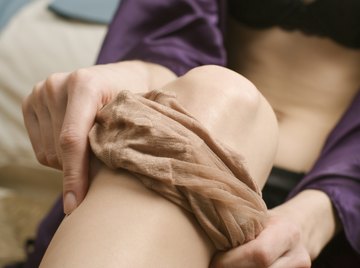
Perhaps you know polymers by their chemical names, like polyvinyl chloride or PVC; it’s in plastic piping and in Elmer’s Glue. But chances are you know them better by their informal or brand names, like Dacron, Orlon, or perhaps most famously, nylon. That word has become a generic term for stockings (with good reason -- that was its first commercial use), but hosiery was just the beginning of nylon’s enduring history.
Composition
“Nylon” is a generic name which refers to a class of long-chain polyamide thermoplastics that have recurring amide groups [-CO-NH-]. Numerous commercial nylons exist with names including nylon 4, nylon 6, nylon 6/6 and nylon 6/12.
History
Nylon was unveiled to the world on October 27, 1938, by Charles Stine, a vice president of E.I. DuPont de Nemours, according to the Smithsonian Institution's Lemelson Center for the Study of Invention and Innovation. Interestingly, Stine announced nylon to 3,000 women's club members gathered for the 1939 New York World's Fair. He described how nylon could be fashioned into fibers as “fine as a spider’s web” but as strong as steel, and that one of its uses would be durable hosiery. (Silk and rayon had proven to be delicate.)
Nylon 6/6 was first synthesized in May 1934 in DuPont’s laboratory. When a laboratory assistant named Donald D. Coffman created a “fine fiber filament [which] seemed to be fairly tough, not at all brittle, and could be drawn to give a lustrous filament.” DuPont laboratories had for years dedicated themselves to “Pure Science Work” under Stine’s direction, rather than applying itself strictly to practical commercial uses. Still, one of the group’s tasks was to develop synthetic fabrics that were superior to silk and rayon.
Its first commercial uses were in toothbrush bristles and hosiery. Nylon was quickly adopted for military use in flight suits, parachutes, even vehicle parts; nylon was not just a fiber, it could be formed into solid parts through extrusion, injection molding and casting.
In Fashion
DuPont would produce other synthetic fibers, including Dacron and Orlon. Those along with nylon were used in high fashion by such high-end designers as Coco Chanel and Christian Dior. Synthetics were seen as fashion-forward, and in the 1960s designers like Pierre Cardin used them to capture the feel of “Space Age living,” according to the Chemical Heritage Foundation.
By the late 1960s, synthetics like nylon and polyester were commonplace and increasingly considered tacky, as well as uncomfortable. A nylon shirt or dress did not breathe as did ones of natural fibers like cotton and wool. While it has lost its popularity in fashion, it is a staple in performance sportswear such as athletic shoes and ski jackets.
Fabrication
Because nylon can be molded and exhibits fair durability, it has been fabricated into small plastic machine parts like gears and screws, parts for automobile interiors, and everyday items like combs, buckles and toothbrushes. It is widely used in its fiber form for durable rope -- rock climbers rely upon nylon versus hemp rope.
Nylon may be used in composite materials (e.g., mixed with glass fiber) to produce light-weight but heat-resistant engine components.
References
About the Author
Dan Antony began his career in the sciences (biotech and materials science) before moving on to business and technology, including a stint as the international marketing manager of an ERP provider. His writing experience includes books on project management, engineering and construction, and the "Internet of Things."
Photo Credits
Creatas Images/Creatas/Getty Images
